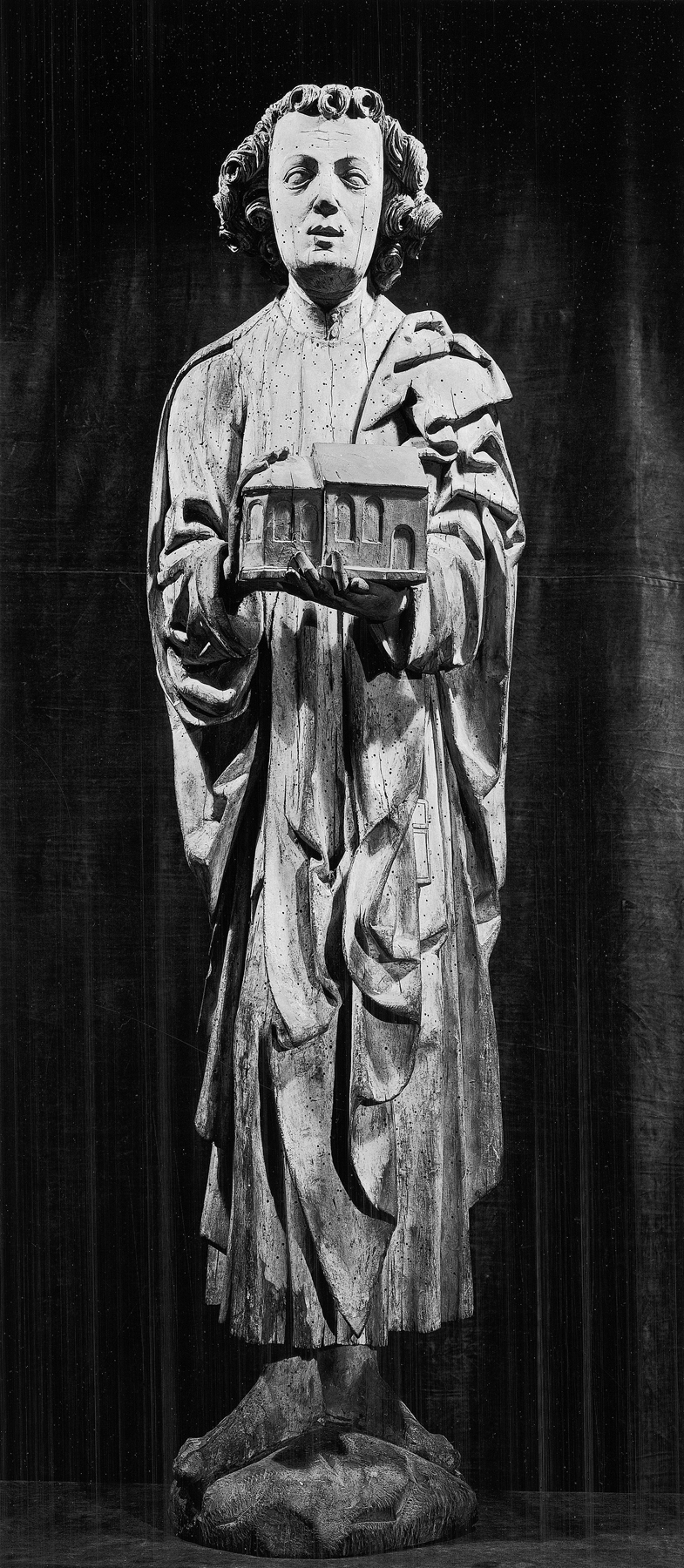Saint Sebaldus or Saint Leopold
This carved wooden statue came from a church interior. Most statues of this type were originally covered by gesso (a mixture of glue and plaster of Paris) and then painted in vibrant colors, with some details gilded; only traces of these decorations still remain.
This figure may represent either Saint Sebaldus (8th century) or Saint Leopold (12th century). Both were depicted in central Europe ca. 1500 holding a model of a church (the tower on this example is missing), but both usually have additional attributes.
Provenance
Provenance (from the French provenir, 'to come from/forth') is the chronology of the ownership, custody, or location of a historical object. Learn more about provenance at the Walters.
Raoul Heilbronner, Paris, by purchase; Henry Walters, Baltimore, 1910, by purchase, Walters Art Museum, 1931, by bequest.
Conservation
| Date | Description | Narrative |
|---|---|---|
| 1/22/1963 | Treatment | cleaned |
| 6/25/1971 | Treatment | cleaned |
Geographies
Germany, Franconia (Place of Origin)
Measurements
60 1/4 x 16 9/16 x 14 9/16 in. (153 x 42 x 37 cm)
Credit Line
Acquired by Henry Walters, 1910
Location in Museum
Centre Street: Third Floor: 15th-Century Art of Northern Europe
Accession Number
In libraries, galleries, museums, and archives, an accession number is a unique identifier assigned to each object in the collection.
In libraries, galleries, museums, and archives, an accession number is a unique identifier assigned to each object in the collection.
27.296


